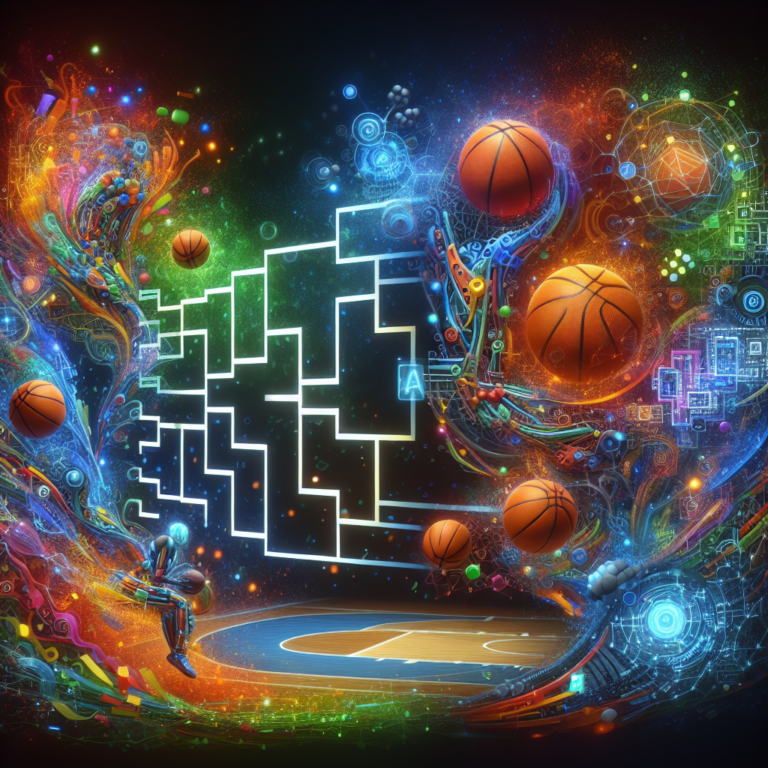Creating March Madness Brackets with AI Swarms: AI Swarm March Madness Brackets
When aiming to forecast the results of the NCAA Tournament, commonly referred to as March Madness, constructing a flawless bracket is regarded as one of the toughest challenges in sports. The likelihood of accomplishing such a feat varies between 1.28 billion and 9.2 quintillion, emphasizing the intricacy of this task. Nevertheless, recent progress in AI swarm technologies has unveiled a fresh methodology for addressing this issue. By merging collective human intelligence with artificial intelligence, platforms such as Hyperchat and Thinkscape allow extensive groups to participate in real-time discussions, immensely boosting their predictive abilities related to AI Swarm March Madness Brackets.
What is an AI Swarm? 🤖
An AI swarm is defined as a collaborative endeavor between humans and AI systems aimed at reaching a shared objective. In relation to **March Madness brackets**, this encompasses utilizing the combined wisdom of a large number of individuals to forecast the outcomes of basketball matches. This method employs technologies that enable effective real-time discussions among vast groups, typically assisted by AI agents known as conversational surrogates. These surrogates assist in synthesizing insights from smaller subgroups and communicating them throughout the broader assembly, thereby forming a unified and well-informed consensus 📝.
How AI Swarms Enhance Predictive Accuracy
The success of AI swarms in forecasting March Madness outcomes is primarily due to their capacity to amplify the collective intelligence of participants. This is accomplished through:
- Scalability: Platforms such as Hyperchat facilitate discussions among extensive groups, overcoming the constraints of conventional real-time deliberation methods.
- Enhanced Intelligence: The amalgamation of diverse viewpoints enables AI swarms to achieve more informed and precise decision-making compared to individual approaches.
- Real-Time Deliberation: AI streamlines swift and effective exchanges among participants, promoting rapid agreement on decisions 📊.
Unanimous AI’s Thinkscape Platform
Unanimous AI has been leading the way in creating platforms like **Thinkscape**, which allow large collectives to collaborate more effectively. In a recent trial, a cohort of 42 sports enthusiasts utilizing Thinkscape produced a bracket that received a ranking in the top 11% nationally in an **ESPN prediction contest** 🏆. This achievement underscores the potential advantages of AI swarms in enhancing prediction accuracy by magnifying human collective intelligence.
The Hyperchat Experiment 📊
A recent investigation involved using **Hyperchat** to gather 50 random sports fans to formulate a **March Madness bracket**. This platform enabled the sizable group to take part in real-time discussions and efficiently generate ideas, ultimately resulting in a bracket that performed exceptionally well, securing a spot in the top 1.4% of the **ESPN contest** 🏅. This outcome showcases the effectiveness of conversational swarm intelligence in improving group decision-making.
Key Features of AI Swarms in Predicting March Madness Outcomes
AI swarms possess several fundamental characteristics that contribute to their effectiveness in forecasting March Madness results:
- Collective Intelligence: By uniting a diverse array of individuals, AI swarms utilize a wider spectrum of experiences and viewpoints.
- Efficient Communication: AI platforms facilitate instantaneous discussions, ensuring that insights are disseminated swiftly and effectively.
- Bias Reduction: The diversity of contributors helps to diminish individual biases, leading to more equitable predictions 💡.
Applications Beyond Sports 🌎
The applicability of AI swarms stretches well beyond sports. In various sectors, they can be leveraged to address intricate challenges by enabling large-scale collaboration and decision-making. This includes strategic planning, innovation, and problem-solving, where the collective wisdom of a diverse group can yield superior results 📈.
Challenges and Opportunities for AI Swarms
Although AI swarms hold remarkable potential, they also face challenges. Ensuring equal representation among participants and curbing biases in AI-generated insights are vital factors to consider. Furthermore, as these technologies advance, opportunities will arise to enhance their efficiency and broaden their applications across different fields 🚀.
Future Developments 🚀
Upcoming implementations of AI swarms may integrate human and AI participants into hybrid groups, further enriching collective intelligence. By incorporating humans into the process, these systems can uphold ethical standards and guarantee that AI-driven decisions align with human principles 🤝.
Conclusion on AI Swarms in Sports Prediction
The application of AI swarms in crafting **March Madness brackets** underscores the groundbreaking uses of collaborative AI technologies. By harnessing collective intelligence, these systems can elevate predictive accuracy and provide insights into how extensive groups can efficiently make informed choices. As the technology continues to progress, it is expected to have implications beyond sports, transforming our methods of collaboration and resolution of complex issues 🌐.
Additional Resources:
The Perfect NCAA Bracket Is A.I.’s Biggest Sports Challenge Yet
Unanimous AI’s March Madness Bracket Results
How a Group of College Basketball Fans Predicted Top March Madness Upsets
NCAA Men’s Basketball Tournament Information




0 Comments